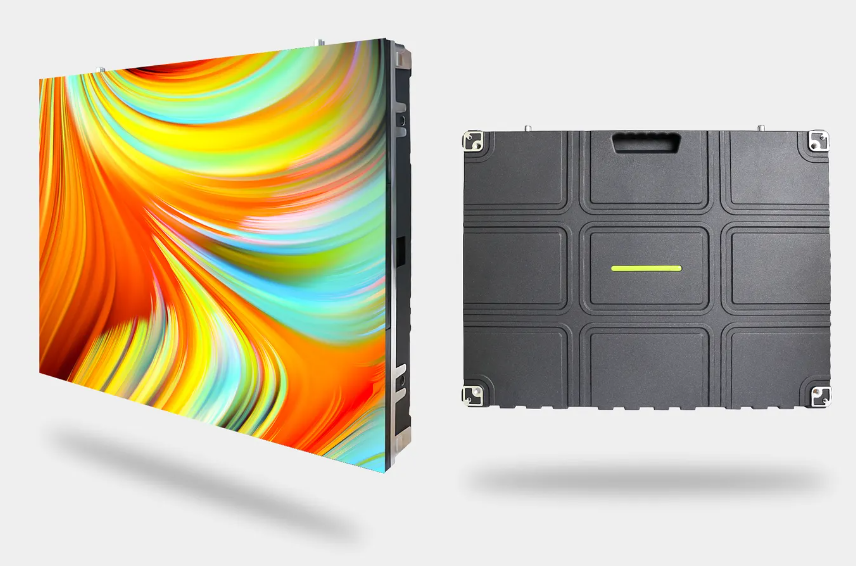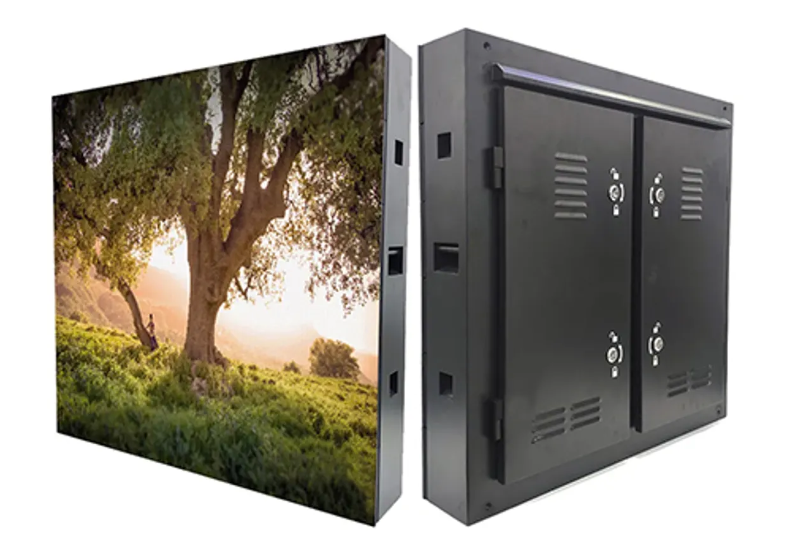
Get a Quote
How to Prevent Condensation on LED Displays?
Condensation occurs when moisture in the air comes into contact with a surface cooler than the dew point temperature, forming droplets. When left unchecked, these droplets can accumulate on LED displays, compromising their performance and longevity.
Understanding the significance of preventing condensation on LED displays is paramount for maintaining optimal functionality and avoiding costly repairs. In this article, we delve into the causes of condensation, its detrimental effects, and practical solutions to safeguard LED displays against moisture-induced damage. Let's explore how to preserve the brilliance of LED displays by implementing effective preventive measures.
Understanding the Causes of Condensation on LED Displays
Environmental Factors Contributing to Condensation
High humidity levels, sudden temperature changes, inadequate ventilation, and exposure to water are key environmental factors that contribute to condensation on LED displays. In regions with high humidity, moisture in the air easily condenses on cooler surfaces, such as LED screens, especially during temperature fluctuations. Additionally, a lack of proper ventilation traps moisture within display enclosures, exacerbating the condensation problem. Exposure to water from rain, snow, or splashing can also introduce moisture to LED displays, further increasing the risk of condensation.
Impact of Condensation on LED Display Performance and Longevity
Condensation can significantly impair the performance and longevity of LED displays. Reduced visibility occurs when water droplets accumulate on the screen, distorting images and obstructing clarity. Flickering lights may result from moisture interfering with the emission of light from LEDs, leading to inconsistent brightness levels. Electrical malfunction is a serious consequence of condensation, potentially causing short circuits and permanent damage to display components. Moreover, condensation can hinder touchscreen functionality, making navigation difficult. Over time, condensation-induced corrosion weakens the structure of LED displays, resulting in a shortened lifespan and increased maintenance costs.
Solutions for Indoor LED Display Condensation
Proper Ventilation Strategies
Ensuring adequate airflow around indoor LED displays is essential for preventing condensation. Proper ventilation allows moisture to dissipate, reducing the risk of droplet formation. Installing ventilation devices, such as fans or vents, can facilitate airflow within display enclosures, promoting a dry environment.
Utilizing Heating Elements
Internal heaters can effectively combat condensation by maintaining a consistent temperature within LED displays. These heaters prevent the surface temperature from dropping below the dew point, minimizing moisture accumulation. Control mechanisms, such as thermostats or temperature sensors, regulate heater operation to optimize performance and energy efficiency.
Integration of Moisture-Absorbing Materials
Strategically placing desiccants within the display enclosure can absorb excess moisture, preventing condensation formation. Desiccant-filled breathable pouches offer an efficient solution, ensuring direct contact with electronic components is avoided while effectively reducing humidity levels.
Installation of Dehumidifiers
Deploying dehumidifiers in indoor environments helps reduce overall humidity levels, mitigating the risk of condensation on LED displays. These devices extract moisture from the air, creating a drier atmosphere conducive to display longevity. When selecting dehumidification systems, factors such as capacity and energy efficiency should be considered.
Adherence to Manufacturer Guidelines
Following manufacturer recommendations regarding installation, ventilation, and humidity control is paramount for preventing condensation. Manufacturers provide guidelines tailored to specific LED display models, offering invaluable insights into optimal operating conditions. Adhering to these guidelines ensures maximum performance and longevity of LED displays.
Deployment of Humidity Monitoring Sensors
Incorporating humidity monitoring sensors enables real-time detection of moisture levels around LED displays. These sensors provide early warning signals, alerting users to rising humidity levels and impending condensation formation. Proactive measures can then be taken to adjust ventilation or activate dehumidifiers, preventing moisture-related damage.
Incorporation of Air-Conditioning Units
Installing air-conditioning units in indoor environments helps regulate temperature and humidity levels, reducing the likelihood of condensation on LED displays. Air-conditioners remove excess moisture from the air, creating a comfortable and dry atmosphere conducive to display performance. Careful consideration should be given to selecting appropriate air-conditioning systems based on display size and environmental conditions.
Solutions for Outdoor LED Display Condensation
Application of Anti-Fog Coatings
Anti-fog coatings serve as protective barriers against moisture, preventing condensation on outdoor LED displays. These coatings repel water droplets, ensuring clear visibility and prolonged display lifespan. Options include factory-installed coatings or aftermarket treatments tailored to specific environmental conditions.
Implementation of Weatherproof Enclosures
Weatherproof enclosures shield outdoor LED displays from the elements, offering durability and protection against moisture infiltration. Constructed from robust materials like aluminum or fiberglass, these enclosures feature tight seals and built-in ventilation systems to maintain optimal airflow while keeping out water.
Utilization of Ventilation Mechanisms Within Enclosures
Ventilation mechanisms within enclosures, such as blower fans or strategically placed ventilation holes, facilitate airflow and prevent moisture buildup. Combining multiple ventilation methods ensures efficient moisture management, reducing the risk of condensation and prolonging display longevity.
Adoption of Vapor-Tight Ventilated Enclosures
Vapor-tight ventilated enclosures are specially designed for outdoor environments, providing superior protection against rain, snow, and moisture infiltration. These enclosures feature advanced sealing mechanisms to keep water vapor out while allowing air circulation, safeguarding LED displays from condensation-related damage.
Application of Anti-Condensation Three Anti-Paint Solution
Anti-condensation three anti-paint solutions create water-repellent surfaces on circuit boards, enhancing display lifespan and corrosion resistance. By preventing water droplets from accumulating on electronic components, these solutions ensure optimal performance in outdoor settings.
Installation of Air-Conditioning Units Within Outdoor Displays
Installing air-conditioning units within outdoor LED displays regulates temperature and humidity levels, minimizing the risk of condensation. Consistent environmental conditions maintained by air-conditioners promote display reliability and longevity, making them essential for outdoor settings.
Conclusion
We've highlighted the significance of proper ventilation, heating elements, moisture-absorbing materials, and other preventive measures for both indoor and outdoor LED displays. These strategies not only mitigate the risks associated with condensation but also ensure optimal performance and reduced maintenance costs in the long run.
As a leading provider of cutting-edge LED display solutions, EACHINLED offers a wide range of products designed to meet diverse needs and environments. With their commitment to quality, innovation, and customer satisfaction, EACHINLED provides assurance of prolonged lifespan and optimal performance for your LED displays. When it comes to safeguarding your investment and ensuring maximum visual impact, trust EACHINLED to deliver excellence in LED display technology.


